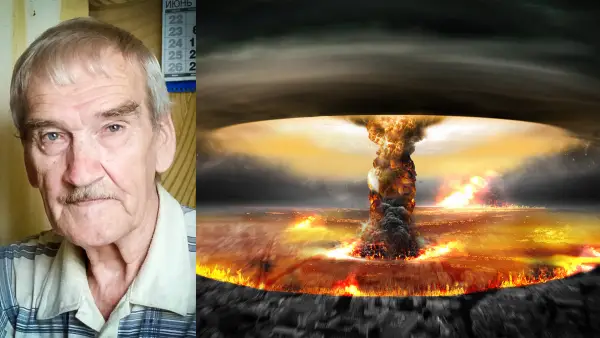The Man Who Prevented Nuclear War By Disobeying Orders
Tags: opinion

On 26th September 1983, the world almost plunged into the third world war. However, a military officer in the Soviet Union, Stanislav Petrov, “prevented nuclear war” by disobeying orders.
Petrov was a lieutenant colonel in the air defense forces of the Soviet Union. He was also the duty officer at a hidden command center named Serpukhov-15. The site monitored Soviet satellites over the US, designed to detect if nuclear missiles had been launched as early as possible.
The World Was On The Brink Of Armageddon
In the early hours of 26th September, alarms had been set off by computers signaling that a base in America had just launched an intercontinental ballistic missile. Some seconds later, the computers indicated that 4 more of them had just taken off.
Stanislav Petrov’s job was registering and reporting such apparent missile launches from the enemy. The Soviet protocol would have seen them launching a few of their own as a retaliation. But Petrov decided to go against his military sense and did not report them. Rather, he wrote them off as false signals.
This meant that Petrov had breached his instructions. It would have been safer and usual for him to pass the information to his superiors, and let them carry the responsibility. However, that decision possibly saved humanity from a devastating nuclear war.
To put the critical nature of the incident, 1983 was an especially critical year right in the middle of the Cold War. Ronald Reagan, the president of the US, had just called the Soviet Union an “evil empire”. As such, he was quickly increasing the nuclear arsenal of the US. US Missile installations were being constructed closer and closer to Soviet territory.
Read: Global Encryption Company Controlled By The CIA For Decades
A range of covert operations that tested the vulnerabilities of the Soviet radar, satellite, and naval capabilities had struck fear into the Soviet Union. They feared that Washington was getting ready to attack with all their forces. To that effect, a fighter plane from the Soviet Union shot down a passenger flight from Korean Air after it flew into Soviet air territory, fearing it to be a plane sent to spy on them. Every passenger was killed.
The Wrong Decision Would Mean Millions Of Lives Lost
Stanislav Petrov thus faced a decision of massive consequence, on the back of huge socio-political events. After seeing the alarms, Petrov and his crew were shocked, to say the least. According to their instructions, they should report the matter to Yuri Andropov, a leader in the Soviet Union, and think about retaliating similarly. The computer systems of Petrov also said that the information provided by the satellites could not be more reliable. In 25 minutes, if the alarms were true, the missiles would detonate at their destinations.
In a 2013 interview with the BBC (given above), Petrov said that there were orders about how long they could take to make the decision of reporting a strike. However, every second was vital and could mean the death of millions of people. Petrov, though, was paralyzed. He felt as if he was “sitting on a hot frying pan.”
In 1999, in an interview with the Washington Post, he said that his gut feeling told him something was off. Petrov decided to report the alarm as a malfunction of the system. It turned out to be correct. The radar installations based on the ground did not detect any attacks. The satellites had seemingly mistaken the reflection of the sun off of clouds at high altitudes and raised the alarm.
Read: Shocking List Of Declassified Military And CIA Secrets Revealed
At first, he received high praise for his cool attitude at such a critical juncture. However, he was reprimanded later because he did not record the proceedings in the logbook properly. In 2006, he was awarded by the Association of World Citizens. In 2013, he received the Dresden Peace Prize. In 2014, the film “The Man Who Saved The World” was made on his life. The greatly unsung hero had passed away on 19th May 2017.
Image credits: Queery-54, CC BY-SA 4.0, via Wikimedia Commons and 123RF
Leave Comment: